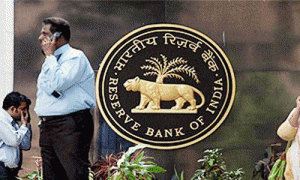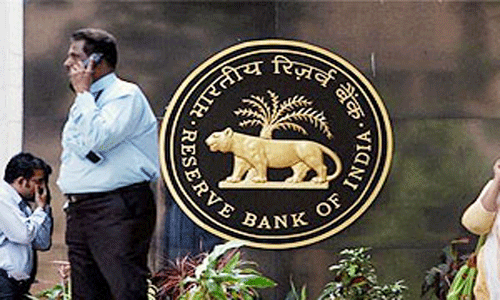News Point: The RBI Governor’s concern with rising crude prices, inflation, bad monsoon and downward inflationary pressure post 7th Pay Commission is bad news for housing market.
 Mohini Ahlawat, a prospective home buyer has been waiting for the last six months in anticipation of interest rate cuts. The media reports that had by and large anticipated the drastic rate cut in the last fiscal of the previous fiscal year did not happen. She was yet again disappointed in the first quarter of this fiscal year but everyone told her that growing GDP, lower crude prices compared to last few years and negative inflation indicate that in the second monetary policy by the Reserve bank of India (RBI) rate cut is on the cards. She is yet again disappointed.
Mohini Ahlawat, a prospective home buyer has been waiting for the last six months in anticipation of interest rate cuts. The media reports that had by and large anticipated the drastic rate cut in the last fiscal of the previous fiscal year did not happen. She was yet again disappointed in the first quarter of this fiscal year but everyone told her that growing GDP, lower crude prices compared to last few years and negative inflation indicate that in the second monetary policy by the Reserve bank of India (RBI) rate cut is on the cards. She is yet again disappointed.
“See, I am not an economist; nor do I understand the financial jargon. But what I fail to understand is that if the GDP is indeed growing, oil prices are low in the global market and over an above that the inflation is low, then why the interest rates are not coming in the range of 7 to 7.5 percent. This is the level at which an average home aspirant can think of buying a house,” Mohini shares her concerns.
However, the concerns of the RBI Governor Raghuram Rajan are more at macro level picture of the Indian economy, ranging from slight rise in retail inflation to anticipated more rise in crude prices, and not so positive monsoon to overall upside risk to inflation after the implementation of 7th pay commission recommendation.
And hence, the RBI Governor kept repo rate unchanged at 6.5 per cent, reverse repo rate stays at 6.00 per cent. Cash Reserve Ratio (CRR) also remains unchanged at 4 per cent. The RBI said April inflation reading makes its future trajectory somewhat more uncertain. The central bank has also retained growth projection at 7.6 per cent for 2016-17 citing corporate profits and surge in consumption. RBI said it will soon review implementation of marginal cost lending rate framework by banks.
Quick bytes
- The RBI Governor concerned with rising retail inflation, anticipated more rise in crude prices, not so positive monsoon and upside risk to inflation after the implementation of 7th pay commission recommendation
- Repo rate unchanged at 6.5 per cent, reverse repo rate stays at 6.00 per cent. Cash Reserve Ratio (CRR) also remains unchanged at 4 per cent
- The RBI retains growth projection at 7.6 per cent for 2016-17 citing corporate profits and surge in consumption
- RBI will soon review implementation of marginal cost lending rate framework by banks
The industry is therefore as disappointed as the home buyers. Shishir Baijal, CMD, Knight Frank India says the sector is disappointed with no change in policy rates and it will take the real estate sector much longer time to come back on the rails. The residential property market has not been doing well and there was expectation that RBI would reduce the policy rates that would have given a boost to the residential property market.
“On a broader note the RBI’s stance of not reducing the policy rates could have emanated from the banking regulator’s move to reduce inflation to below 5 per cent by March 2017. The fact that CPI moving up to 5.39 per cent and wholesale inflation turning positive could be the factors that may have prompted the banking regulator to leave the policy rates unchanged. Crude prices moving up exponentially is expected to further add to inflationary pressures,” says Baijal.
Ashwin Sheth, CMD, Sheth Corp feels the RBI has played it safe and has been more cautious about the monsoon and its impact on inflation. Although, a rate cut at this stage would have helped in lowering the home loan interest rates making home buying a reality for most buyers who have been eagerly waiting for the rates to cut down.
“The Government has taken the lead in trying to implement policies that will boost growth of the real estate sector. In the same vein, RBI too should have looked at the real estate sector with new optimism. The central bank has reduced its policy rate by 150 basis points until now since January 2015. But banks have cut their rates only about 70 bps. In short, economy is yet to get the full benefit of the rate cut. The banks should pass on the benefit to the home buyers as this will encourage the buyers to buy their dream home,” says Sheth.
Vineet Relia, Managing Director of SARE Homes also feels that the RBI Governor Raghuram Rajan’s decision to keep the repo rate unchanged at 6.5 per cent is disappointing, though not unexpected. As the RBI had already announced a 25 basis point repo rate cut in its April policy review, and with retail inflation rising to 5.39 per cent in April from 4.83 per cent in March, expectations of a rate cut were extremely muted.
“Since retail inflation is expected to rise due to the rally in crude oil and other commodities prices and implementation of the 7th Pay Commission recommendations, it is clear the RBI is focussed on lowering retail inflation to 5 per cent by March 2017. Nonetheless, since demand in real estate and allied industries remains sluggish, a rate cut could have improved liquidity and created renewed interest in property purchase. But with the RBI stating its monetary policy stance is ‘accommodative’, one is hopeful a rate cut may be in the offing in the latter half of 2016,” says Relia.
Manju Yagnik, Vice Chairperson, Nahar Group, on the contrary, welcomes the RBI Governor Raghuram Rajan’s announcement to keep the repo rate unchanged at 6.50 per cent. She asserts that the last RBI bi-monthly announcement had reduced interest rate which were not passed on to customers by the banks. Now banks should pass on the benefits to the customers by lowering interest rates which will result in home buyers coming forth and buying property. This has the potential to spur property sales and inject fresh capital into the market.
“The Indian economy grew by 7.9 per cent in the March quarter and ranked as the world’s fastest growing economy. This move will create jobs and create positive sentiments within the country. Also, keeping rates unchanged will help control inflation which presently is at 5% with an upward bias,” says Yagnik.
The home buyers and the developers have their own reasons to criticize the quo status. The RBI too has its own reasons not to lower the rates this time. However, what can definitely be vouchsafed is the fact that the this is definitely not a good news for the overall health of the housing market; something that contributes substantially to the Indian GDP.
By: Ravi Sinha





